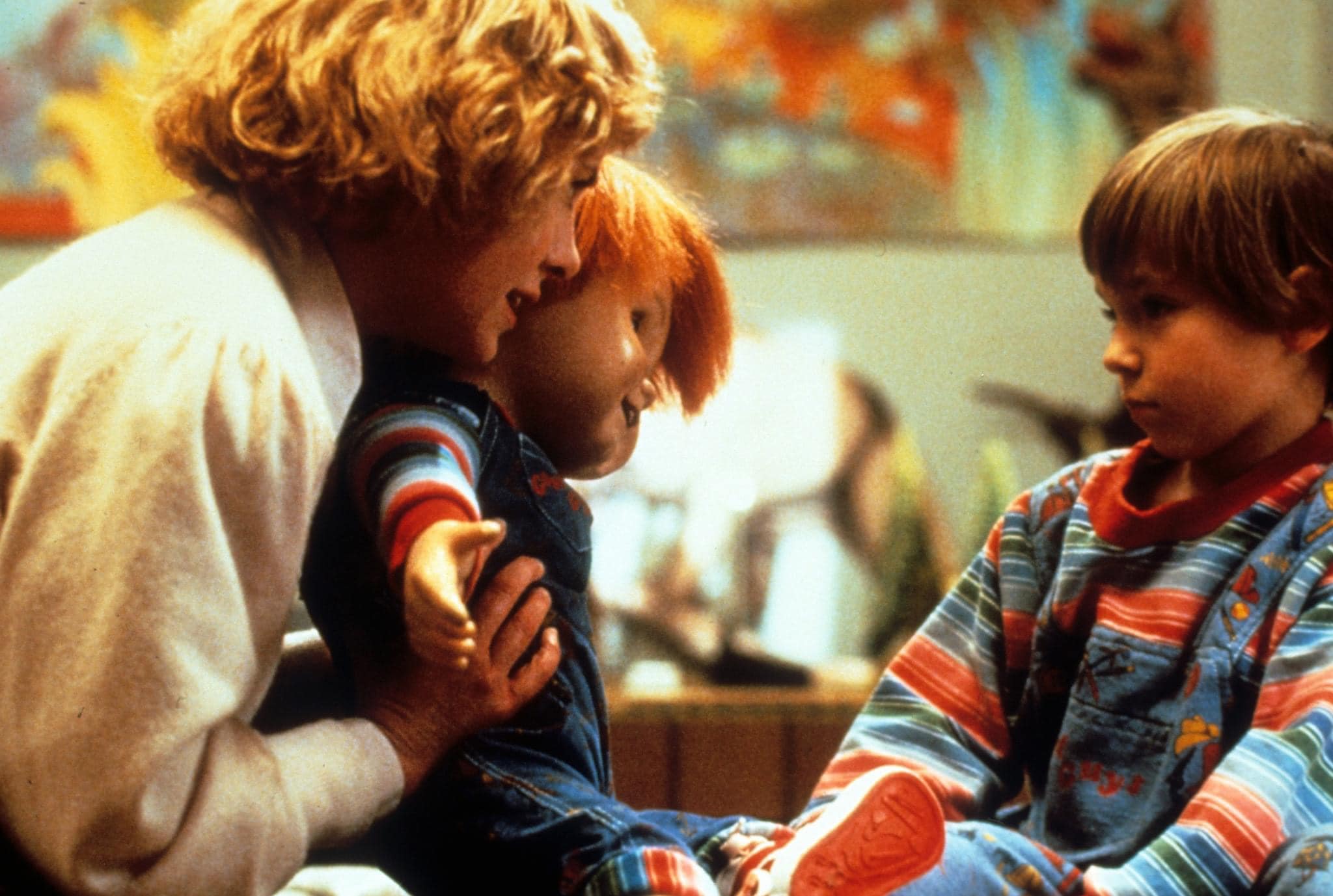Child’s Play (1988)

Title: “Child’s Play (1988): A Timeless Horror Classic with a Chilling Message”
Introduction:
Released in 1988, Child’s Play is a seminal film in the horror genre, introducing audiences to one of cinema’s most notorious villains—Chucky, the possessed doll. Directed by Tom Holland and written by Don Mancini, this film has left an indelible mark on horror, blending slasher elements with a unique supernatural twist. Beyond its thrills and scares, Child’s Play offers a deeper commentary on childhood fears and the consequences of unchecked malevolence.
Plot Summary:
The film begins with the murder of notorious serial killer Charles Lee Ray, who uses a voodoo ritual to transfer his soul into a Good Guy doll before his death. The doll is later purchased by a single mother, Karen Barclay, for her young son, Andy. Unbeknownst to Karen, the doll is inhabited by Ray’s malevolent spirit. As Andy’s birthday gift becomes the source of terrifying and deadly occurrences, the true horror unfolds. The doll, now Chucky, seeks to transfer his soul into Andy’s body to escape his doll form and live again.

Themes and Significance:
- Childhood Innocence and Terror: Child’s Play explores the juxtaposition of childhood innocence with horror. Chucky’s transformation from a seemingly benign toy into a terrifying entity represents a perversion of the comforting and familiar aspects of childhood. The film capitalizes on the fear of something familiar turning sinister, a concept that taps into deep-seated anxieties about safety and trust.
- Parental Anxiety: The film also delves into the anxieties of parenthood. Karen Barclay’s struggle to protect her child from an unseen threat mirrors the real-life fears of parents trying to shield their children from harm. The narrative underscores the idea that even the most well-intentioned gifts can become sources of danger, reflecting the unpredictable nature of life and parenting.
- The Nature of Evil: Chucky’s malevolence challenges viewers to consider the nature of evil. The doll’s malevolent behavior raises questions about the origins of evil—whether it is inherent or a result of external influences. The film suggests that evil can manifest in unexpected forms and that it can be difficult to recognize until it is too late.
- Supernatural vs. Psychological Horror: While Child’s Play incorporates supernatural elements with its possessed doll, it also engages with psychological horror. The disbelief and paranoia experienced by the characters, especially Karen and Andy, contribute to a sense of dread and isolation. The film blends these elements seamlessly, creating a narrative that is both terrifying and thought-provoking.












